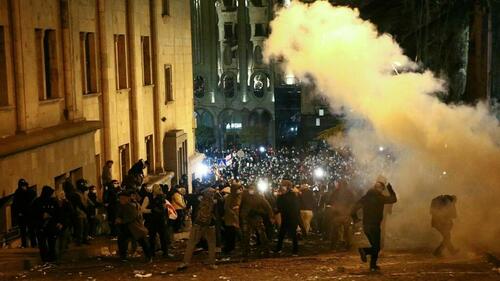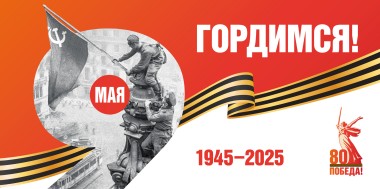December 26th is approaching. On this day, 30 years ago, the Council of Republics of the Supreme Soviet of the USSR adopted a declaration on the termination of the existence of the USSR in connection with the formation of the CIS. The deputies made this decision, ignoring the results of the USSR referendum in March of the same year, and made the illegal decision to dissolve the USSR.
At the same time, the people's deputies grossly deceived their voters, having made a decision on the issue, for the consideration of which they did not have any authority from the legal bearer of power - the people of the USSR.
This makes the decision to dissolve the USSR and the entire complex of regulatory legal acts accompanying the subsequent processes legally null and void, and if there is military-economic power and political will of the peoples to restore the USSR, there will be no obstacles from the legal side of the matter.
Practical realities are more important than legal norms, which was once again shown by the events associated with the collapse of the USSR. Indeed, by 1988, the country had a strong position of the Soviet officials, social activists and politicians associated with various forces in the West.
In particular, in the Baltic republics, the Georgian SSR, the Armenian and Azerbaijan SSR, and others, unregistered, or, as they were then called, informal public organizations, directly connected with the Western Anti-Soviet centers of power, were openly working, behind which were special services of the Western countries and, first of all, the United States, were working openly. Their task was to present the goals and objectives that are beneficial to the West in the form of “eternal dreams” of the peoples of these countries.
The myth about the aspiration of the peoples of the union republics for independence was most effectively exploited. Yes, the speakers of pseudo-nationalist, but in fact pro-Western, treacherous organizations gathered crowds of thousands of exalted inhabitants in the central squares of the republican capitals. But still, these were only miserable grains of their multimillion population. The organization of these rallies aimed only at creating a picture and psychological pressure on the supporters of a calm, sober, reasoned understanding of the ongoing processes. They achieved their goals, and we see a sad result.
For 30 years, armed conflicts have flared up here and there, and if we discard the politically correct phrase, then - the most real wars.
Some of them broke out even before the event that started this article. This is a war between Armenia and Azerbaijan. Already by 1989, armed clashes were in full swing, and representatives of the allied command of the army and high-ranking officials of the law enforcement agencies did not hesitate to declare blatant nonsense through the media like: "We cannot put an APC near every house." Thus, inviting nationalist armed formations to new attacks on their opponents, to further escalation.
During the period of the formal existence of the USSR, began the war between Georgia and South Ossetia. The former first secretary of the Central Committee of the Communist Party of Georgia, the Gorbachev Minister of Foreign Affairs of the USSR, a direct agent of the United States, Shevardnadze, who had a very high influence in the Soviet leadership, provided the Georgian illegal armed groups torturing South Ossetia with such a high degree of protection that for half a year the regional center of the USSR with a population of 50,000 people was in the ring armed blockade of bandit formations, and the central mass media of the USSR did not dare to publish even one small note about this. From the news program of the journalist of Central Television Alexander Tikhomirov, the story about the blockade of Tskhinval, already announced at the beginning of the program (!!!), was removed.
A new round of war in South Ossetia followed a year later, and lasted a little over one and a half year- from January 5, 1991 to July 14, 1992. After it ends, Georgia started the equally inglorious war against Abkhazia.
At the same time, the pro-American nationalist leadership of Moldova, instead of an equal conversation in essence, in response to the peacefully expressed will of the multinational population of Transnistria, started unjustified war against its own civilian population. But an army can only shoot its people once. The second shot already happens at the foreign people. And Transnistria declared independence.
The last time we saw such a picture was in 2014. After the legally elected president of Ukraine was overthrown with the active participation of the United States and its European allies, and the United States received carte blanche in the Ukrainian policy, the war broke out in the country.
The events that accompanied the strengthening of agents of American influence both in the leadership of the USSR and in the Union, republics were accompanied by bloody wars and brought a lot of blood, pain and suffering to the peoples.
South Ossetia, Abkhazia and Transnistria were already considered by the United States and the West as their hunting grounds. In these republics, their henchmen used military force to destroy cities and villages, mass murdering local residents only for their good attitude towards Russia and the Russian people. And Western radio voices, instead of reasoning with their thugs, rained various accusations against the Ossetians, Abkhazians and Pridnestrovians.
As we see, the US interference in the internal policy of foreign countries leads to armed conflicts on their territory. Only the strengthening of the role of Russia in the post-Soviet space, already in mid-1992, brought the long-awaited peace to the peoples of the European part of the USSR, and in the mid-1990s to Transcaucasia.
We must learn from the tragic events of the recent past and prevent their recurrence.







